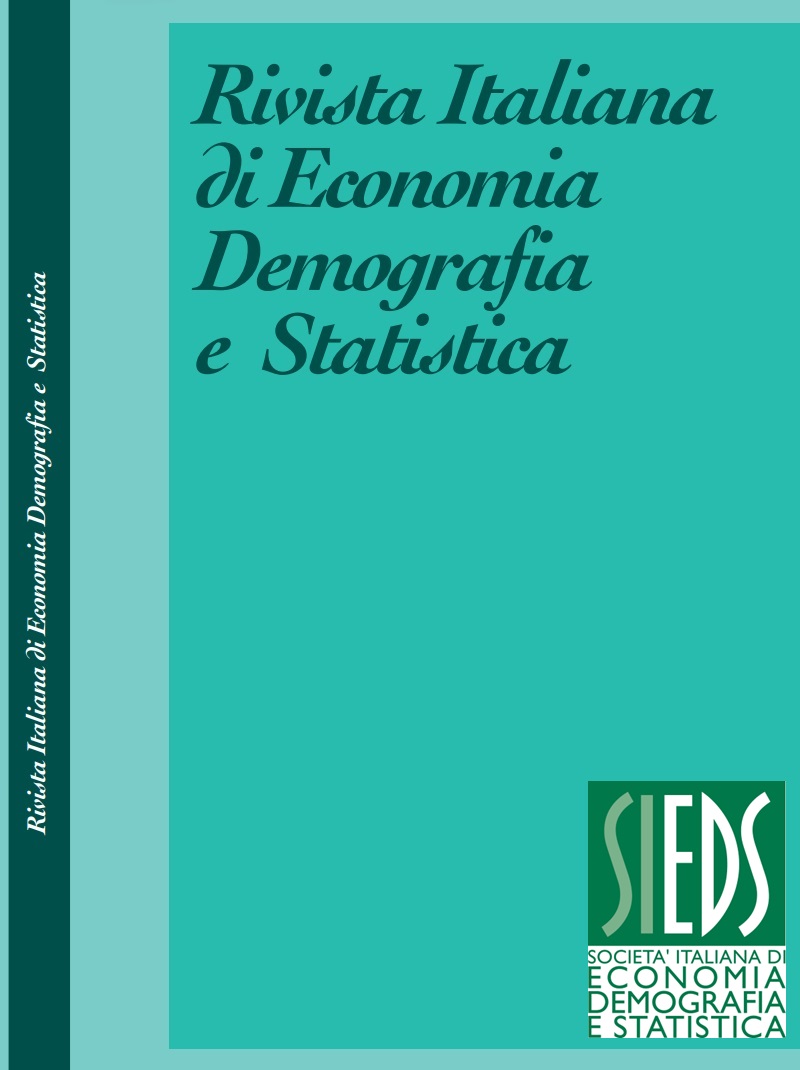Increase response rate in Italian surveys: a reward model proposal
DOI:
https://doi.org/10.71014/sieds.v79i1.372Abstract
The proliferation of new sources of information, varying in reliability, reinforces the view that society as a whole can be observed, described and quantified through an analysis of the data generated and stored in the Internet of Things (IoT). The automatic gathering of data from our actions, purchases and online browsing habits provides a direct and automated method of data collection, offering insights into our behaviour and habits.
In this context, private research institutes and national statistical offices (NSOs) must develop strategies to increase direct respondent participation and reduce the occurrence of non-response. Indeed, the use of monetary incentives is not always sufficient, and further measures must therefore be considered. The paper begins with an analysis of legal provisions concerning mandatory participation and goes on to propose a new approach that transforms the experience of participating in surveys from a “duty” to be fulfilled to a “benefit” to be enjoyed. This proposal would shift from a punitive approach involving monetary sanctions to a purely administrative approach based on verifying statistical compliance and issuing a specific attestation document. The possession of this document would then determine eligibility for rewards and/or benefits.
References
BERĘSEWICZA M., LEHTONEN R., REIS F., DI CONSIGLIO L., KARLBERG M. 2018. An overview of methods for treating selectivity in big data sources, Statistical Working Papers, Eurostat.
CREIGHTON K.P., KING K.E., MARTIN E.A. 2001. The Use of Monetary Incentives in Census Bureau Longitudinal Surveys. Washington: U.S. Census Bureau.
FLORESCU D, KARLBERG M, REIS F, et al. 2014. Will ‘big data’ transform official statistics? retrieved from http://www. q2014.at/fileadmin/user_upload/ESTAT-Q2014-BigData OS-v1a.pdf.
LIPPS, O., HERZING, J. M. E., PEKARI, N., ERNST STÄHLI, M. POLLIEN, A., RIEDO, G., REVEILHAC, M. 2019. Incentives in surveys. FORS Guide, n. 08, Version 1.0. Lausanne: Swiss Centre of Expertise in the Social Sciences.
MARBACH, G. 2002. Le ricerche di mercato negli anni della discontinuità, Roma: UTET.
PRATESI M. 2017. I big data: il punto di vista di uno statistico. Menabò di Etica e Economia, retrieved from https://eticaeconomia.it/i-big-data-il-punto-di-vista-di-uno-statistico/
SAVOLDELLI S. 2018. Perché I big data non uccideranno la ricerca tradizionale, retrieved from https://sandrosavoldelli.wordpress.com/2018/11/25/perche-i-big-data-non-uccideranno-la-ricerca-tradizionale/.
SINGER, E. 2002. The use of incentives to reduce nonresponse in household surveys. In GROVES, R. M. , DILLMAN, A., ELTINGE J. L., & LITTLE R. J. A. (Eds.), Survey nonresponse, Hoboken, NJ: Wiley. pp. 163-177.
Downloads
Published
Issue
Section
License
Copyright (c) 2025 Michele Camisasca, Fabio Falcone, Livio Gigliuto, Giuseppina Sola

This work is licensed under a Creative Commons Attribution 4.0 International License.



